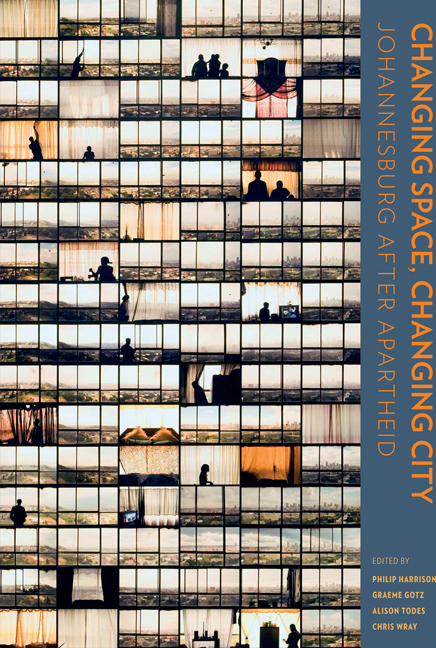Book contents
- Frontmatter
- Contents
- Preface
- Cartography
- 1 Materialities, subjectivities and spatial transformation in Johannesburg
- Section A The macro trends
- 2 The ‘thin oil of urbanisation’? Spatial change in Johannesburg and the Gauteng city-region
- 3 Poverty and inequality in the Gauteng city-region
- 4 The impact of policy and strategic spatial planning
- 5 Tracking changes in the urban built environment: An emerging perspective from the City of Johannesburg
- 6 Johannesburg's urban space economy
- 7 Changes in the natural landscape
- 8 Informal settlements
- 9 Public housing in Johannesburg
- 10 Transport in the shaping of space
- 11 Gated communities and spatial transformation in Greater Johannesburg
- Section B Area-based transformations
- Section C Spatial identities
- Contributors
- Photographic credits
- Acronyms
- List of plates
- List of figures
- List of tables
- Index
2 - The ‘thin oil of urbanisation’? Spatial change in Johannesburg and the Gauteng city-region
from Section A - The macro trends
Published online by Cambridge University Press: 20 April 2018
- Frontmatter
- Contents
- Preface
- Cartography
- 1 Materialities, subjectivities and spatial transformation in Johannesburg
- Section A The macro trends
- 2 The ‘thin oil of urbanisation’? Spatial change in Johannesburg and the Gauteng city-region
- 3 Poverty and inequality in the Gauteng city-region
- 4 The impact of policy and strategic spatial planning
- 5 Tracking changes in the urban built environment: An emerging perspective from the City of Johannesburg
- 6 Johannesburg's urban space economy
- 7 Changes in the natural landscape
- 8 Informal settlements
- 9 Public housing in Johannesburg
- 10 Transport in the shaping of space
- 11 Gated communities and spatial transformation in Greater Johannesburg
- Section B Area-based transformations
- Section C Spatial identities
- Contributors
- Photographic credits
- Acronyms
- List of plates
- List of figures
- List of tables
- Index
Summary
Johannesburg in its regional context
‘Delink from Johannesburg’: a regional view of spatial developments
EMM [Ekurhuleni Metropolitan Municipality] and its MSDF [Metropolitan Spatial Development Framework] acknowledge that it is part of the Gauteng city region. All the spatial and integral frameworks from the inception of the metro in 2000 have taken their cue from the Gauteng spatial planning framework and all the studies associated with it. Initially the core economic development triangle was developed directly from the GSDF [Gauteng Spatial Development Framework] of 2003, which identified Tshwane, Johannesburg and Kempton Park (including Germiston and Boksburg) as the development triangle of the province. The current MSDF evolved from the GSDF of 2010 which identifies Kempton Park as a development area emerging from the region developing around Johannesburg CBD as its core. However, since EMM is a metro in its own right, the concentric zone model adopted for Gauteng with EMM being part of CoJ [City of Johannesburg], it had been necessary to consciously delink EMM from CoJ and retain the core economic development triangle as part of the developmental agenda for EMM …
It so happens that the airport is less than 10km from the metros boundary CoJ and hence the city is skewed towards Johannesburg. Most of the development activities in the city are based towards the west which is close to CoJ. Having noticed the skewed nature of developments in the city close to CoJ, the city adopted the core economic development triangle that would push the metro towards the east. The closeness of the city to CoJ cannot be ignored but it should not be to the detriment of the desired development of the eastern areas of the city of Ekurhuleni.
(EMM 2012: 16–17)This extract, from the EMM's MSDF, is a remarkably frank statement of an underlying set of assumptions and attitudes about future urban development in the municipality. Decoded and pared to its essence, the passage signals a refusal to accept a new regional planning framework that sees Ekurhuleni in the orbit of Johannesburg. In turn, it states an intention to steer development away from the boundary shared by the two municipalities and therefore away from the current urban centre of gravity and towards the spatial periphery.
- Type
- Chapter
- Information
- Changing Space, Changing CityJohannesburg after apartheid, pp. 42 - 62Publisher: Wits University PressPrint publication year: 2014



